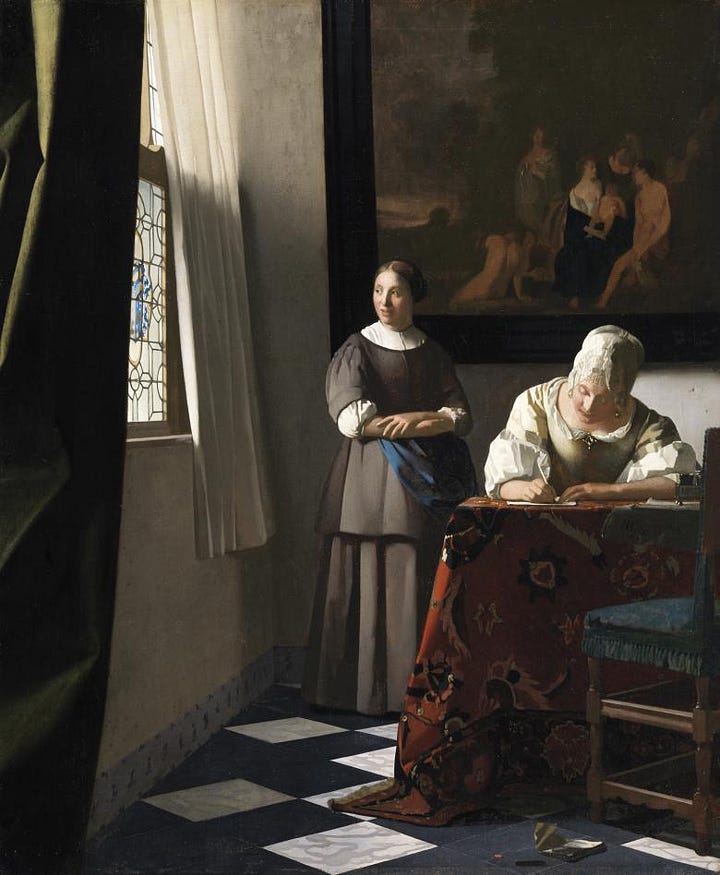

In Vermeer’s Woman Writing a Letter, with her Maid (c. 1670), we see that the maid is looking out a window, but not what she sees through it. In fact, not once in Vermeer’s work do we see the outside world from inside. I wonder if Vermeer’s domesticity relies on the sense of enclosure created by the angle at which he approaches his interior subjects. Consider the parallel between glancing out a window and writing a letter. Both actions communicate with the exterior world, but the signal is going one-way. They imply a kind of safe perch from which the Other may be considered.
In Vrel’s A Seated Woman Looking at a Child through a Window (after 1656), there is nothing to see outside. Instead, a pale child stares back in, and the gaze is the site of an uncanny meeting between the child and the woman. Gerdien Verschoor writes: ‘here Vrel suddenly conjures up a person who seeks contact with the Other.’1 Unlike with Vermeer, the communication between the interior and exterior is mutual, but this relation is made strange by the ersatz spatiality of the composition. Vrel’s liberties with perspective are indicated by the way that the corners of the walls open the room up at odd angles. The bareness of the house matches the darkness outside. Vermeer’s maid is passively curious; Vrel’s woman needs a response from the exterior - she is possibly waving, possibly pressing her hand to the window - but the child remains inscrutable.
Strictly speaking, Vrel is a forerunner to Vermeer, but his work feels like a modern subversion of the latter’s treatment of the domestic and private, and a counterargument to the idea of an aloof, one-directional gaze on the world. His dark exteriors anticipate Nietzsche’s abyss-that-gazes-back by two hundred years. We understand through Vrel that the partitioning of outside and inside is a way of creating and frustrating relations between subjects, of compelling, enabling, and subverting contact.
Gerdien Verschoor, ‘Ode to Jacobus Vrel’, Mauritshaus Magazine, 2023(1), 20-24, p.24.



